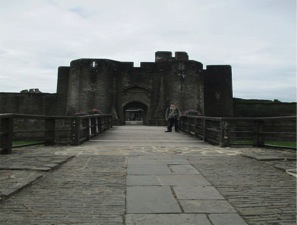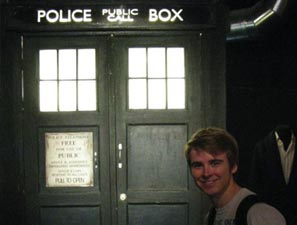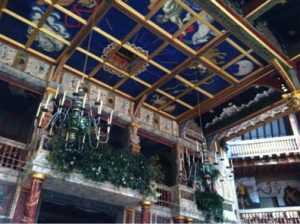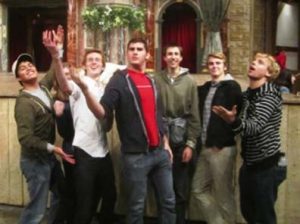Student Reports: Engineering in England, Summer, 2013, Part One
Brittani Erwin
A weekend in Dublin, Ireland

During our time in London, the faculty leaders decided to give us a long weekend to travel by taking Monday off of class. This year we decided to head to Dublin, Ireland.
We left Friday, June 14, after class. We took a train to Holyhead, Wales. From Holyhead, we got on a ferry that took us to Dublin. The trip was very tiresome, because we were traveling during the middle of the night. We arrived in Dublin around 6 a.m. on Saturday.
When we arrived, we went and got a full Irish breakfast. It is a must-do while in Ireland. We then went to St. Patrick’s and Christ Church Cathedral. They were both very beautiful churches.
We also went to the Guinness factory. It was cool to see how it is made and how popular it is in Ireland.
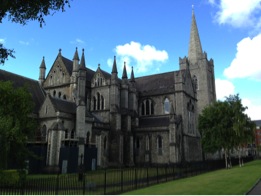 That night, we decided to go and see Bon Jovi at Slane Castle in Ireland, shown at right. It was the best concert I had been to and it was such a cool experience. The next day we went to see Trinity College and the Book of Kells. On Sunday night we visited the Temple Bar area and saw a couple of music acts
That night, we decided to go and see Bon Jovi at Slane Castle in Ireland, shown at right. It was the best concert I had been to and it was such a cool experience. The next day we went to see Trinity College and the Book of Kells. On Sunday night we visited the Temple Bar area and saw a couple of music acts
On Monday we had to get up early and finish seeing everything we wanted. We went to the old Jameson distillery, and did a tour. That was also very cool to see that all the Jameson made at one time was distilled in that one factory. After the tour, it was time to head to the ferry to go back to Holyhead.
Our trip was once again overnight and we had class that morning in London. We were so tired on Tuesday, but the trip was worth every minute. I enjoyed Dublin, and I would definitely recommend it to anyone who wants to do some traveling.
Josh Penney and Aaron Young
June 15-17—A Weekend in Cardiff, Wales
During the long weekend, we took a train out to Cardiff, which is the capital of Wales. We picked Cardiff for several reasons, but mostly for the Doctor Who Experience, which is a museum about the BBC show “Doctor Who” which happens to be one of our all-time favorite shows.
As we continued to explore Cardiff and the surrounding area throughout the weekend, we discovered some amazing castles dotted throughout the Welsh countryside. We visited three castles, Cardiff Castle, Caerphilly Castle, and Castel Coch.
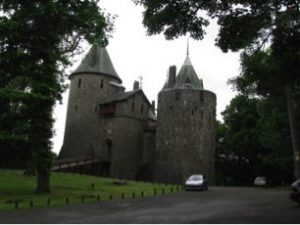 Each castle had its own special feel ranging from the very nicely refurbished Castel Coch (shown at right), to the much more impenetrable fortress of Caerphilly Castle.
Each castle had its own special feel ranging from the very nicely refurbished Castel Coch (shown at right), to the much more impenetrable fortress of Caerphilly Castle.
Wales provided a very different cultural feel than we had experienced in the city and the countryside definitely operated at a much slower pace than downtown London.
It was a great trip to get away from the hustle and bustle of the city and explore the rich, and extremely green, Welsh countryside.
Carl G. Britt III
Greenwich, England
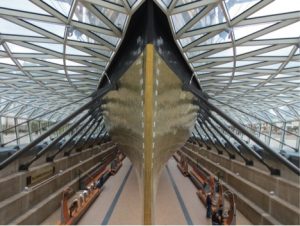
Greenwich is a remnant of UK’s naval superiority in history. It used to be a naval academy, and as such the National Maritime Museum and the glorious Cutty Sark are two of the key attractions.
The Cutty Sark used to be the fastest merchant vessel that travelled to China for tea. At the end of its career, it travelled to Australia to haul merino wool.
The National Maritime museum was a hoot with all its knowledge on ships and all that. I found the ship models particularly amazing. The Royal Observatory was absolutely awesome. The Prime Meridian, the spot where East and West are divided, is located there.
The highlight of this trip was the Harrison clocks. Back in the day, it was extremely difficult to find where you were at with respect to latitude at sea. There was a grand prize awarded to whoever could derive the solution.
There were two popular approaches: the astronomers said one could locate the position via the stars, and the clocksmiths who claimed if you could compare the local time (sun rising or setting) with some other time reference.
The clock makers won this argument with Harrison developing a clock that was impervious to any movement. Harrison spent most of his life creating four clocks to solve this challenge.
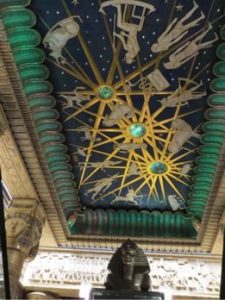
Harrod’s
If you want to feel absolutely insignificant, just head on down to Harrod’s! They have a fancy Egyptian escalator (shown at right), a furniture store, an autographed movie props/posters store, designer clothes for kids, a crazy food court (with delicious fancy food), live operas, and a pet spa. The toy store was pretty awesome though; I relived all my Lego days whilst I was there. 2/10, would not visit unless I have boukou loads of money.
Tates Modern Art Museum
Tates Modern Art Museum is the bomb. Real talk though. They had some kickin’ Picasso portraits which look nothing like human beings, but we value them because reasons. Sarcasm aside, Tates has a great collection of surrealist paintings and portraits, still lives, and sculptures. We could only knock out a floor in the two hours we spent there.
The Globe: A Midsummer Night’s Dream
If you are in London, you must see a play at the Globe, shown at right. It’s five quid, and it’s worth every pence. Do not get the “hoity toity” seats. You should stand in “the pit” amongst the commoners and experience it the way Shakespeare was meant to be experienced.
There are no microphones, no screens, and no special effects; just raw energy and talent. I did not become a true Shakespeare fan until I saw a “Midsummer Night’s Dream” in person. There is just so much more to experience in person.
Most of the group leaned upon the stage and got to see every detail in each of the actors’ faces. There was plenty of audience interaction, so many innuendos, and, just, just book a flight and go see a play.
The Science Museum
Science is cool. So when we visited the Science museum, you best believe we were hyped.
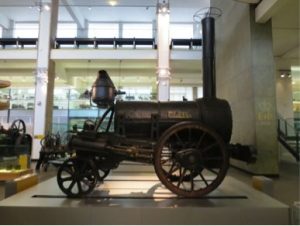
One could follow the progression of engines from Savery’s gigantic atmospheric engine to Watt’s separate condenser engine to tabletop devices to run factory lines to generators ran by steam turbines.
The museum also had the machine that started the railroad boom: Stephenson’s Rocket.
Other exhibits included the Life of Turing, which is a topic worth a blog in itself (and will be, since we were to visit Bletchley Park). There were plenty of mechanical computers that were unbelievably complex. It’s amazing to witness the ingenuity of others.
